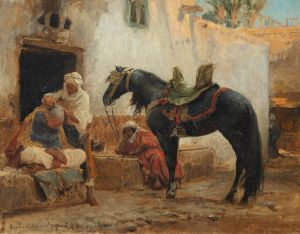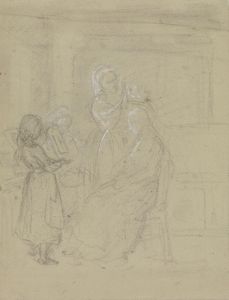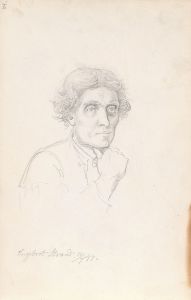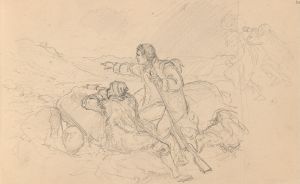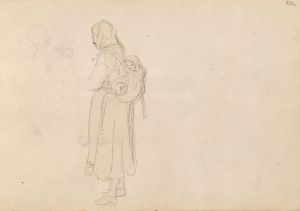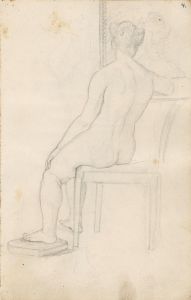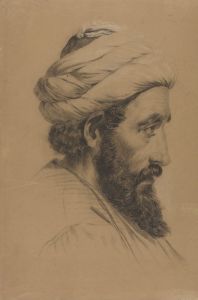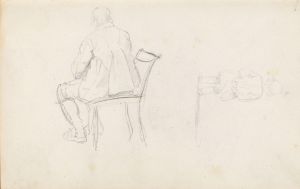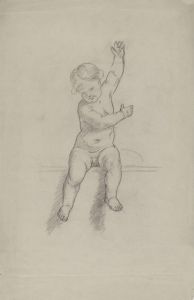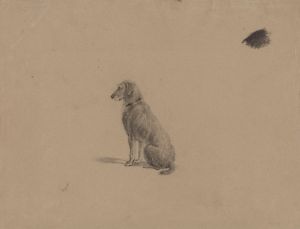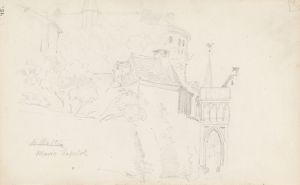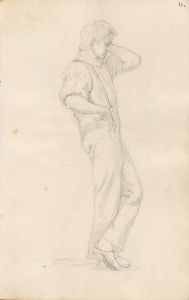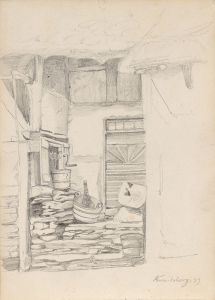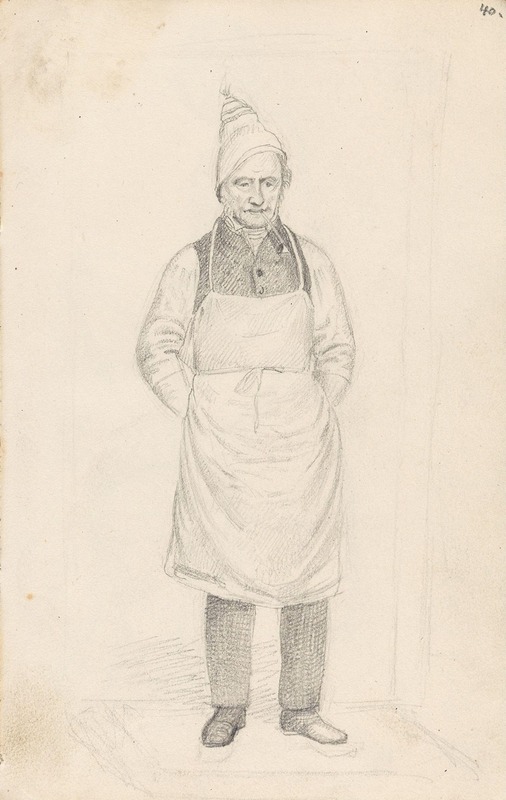
Mann med forkle
A hand-painted replica of Adolph Tidemand’s masterpiece Mann med forkle, meticulously crafted by professional artists to capture the true essence of the original. Each piece is created with museum-quality canvas and rare mineral pigments, carefully painted by experienced artists with delicate brushstrokes and rich, layered colors to perfectly recreate the texture of the original artwork. Unlike machine-printed reproductions, this hand-painted version brings the painting to life, infused with the artist’s emotions and skill in every stroke. Whether for personal collection or home decoration, it instantly elevates the artistic atmosphere of any space.
Adolph Tidemand was a prominent Norwegian painter in the 19th century, known for his detailed and realistic depictions of Norwegian folk life and traditions. One of his lesser-known works is "Mann med forkle," which translates to "Man with Apron." While there is limited information available specifically about this painting, it is consistent with Tidemand's broader body of work, which often focused on capturing the essence of rural Norwegian culture.
Tidemand was born on August 14, 1814, in Mandal, Norway. He studied art in Copenhagen and later in Düsseldorf, which was a significant center for art and culture during that time. The Düsseldorf School of Painting, where Tidemand honed his skills, was known for its emphasis on detailed realism and often romanticized depictions of landscapes and everyday life. Tidemand became one of the most important figures in this movement, particularly for his focus on Norwegian subjects.
Throughout his career, Tidemand was deeply interested in the lives of ordinary people and the traditions that defined Norwegian society. His works often depicted scenes of rural life, traditional costumes, and cultural practices. This focus was part of a broader national romantic movement in Norway, which sought to establish a distinct national identity through art and culture. Tidemand's paintings played a crucial role in this movement by highlighting the unique aspects of Norwegian life.
"Mann med forkle" fits within this context as it likely portrays a scene from everyday life, focusing on an individual engaged in a common activity. The title suggests that the subject of the painting is a man wearing an apron, which could indicate that he is involved in a domestic or craft-related task. This aligns with Tidemand's interest in depicting the dignity and value of ordinary labor and domestic life.
Tidemand's attention to detail and his ability to convey the character and mood of his subjects made his paintings resonate with audiences both in Norway and abroad. His works were celebrated for their authenticity and their ability to capture the spirit of Norwegian culture. Tidemand's paintings, including "Mann med forkle," contributed to a growing appreciation for Norwegian heritage and helped to foster a sense of national pride.
While specific details about "Mann med forkle" are scarce, it is reasonable to assume that the painting reflects Tidemand's broader artistic goals and themes. His works often served as a visual record of Norwegian life during a time of significant social and economic change. By focusing on the everyday experiences of ordinary people, Tidemand's paintings provided a window into the past and helped to preserve the cultural heritage of Norway.
Adolph Tidemand passed away on August 25, 1876, but his legacy continues through his contributions to Norwegian art and culture. His paintings remain an important part of Norway's artistic heritage, celebrated for their historical significance and their ability to capture the essence of a bygone era.





